
More than 200 scientists, researchers, government officials and farmers descended on Green Bay, Wis., in late April to take part in the 2010 AgSTAR national conference.
More than 200 scientists, researchers, government officials and farmers descended on Green Bay, Wis., in late April to take part in the 2010 AgSTAR national conference.
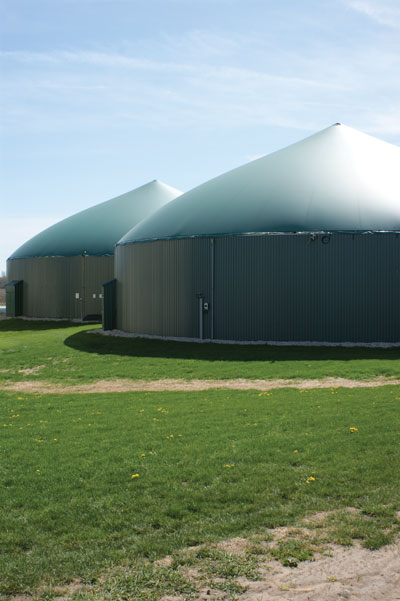
|
|
| Green Valley Dairy operates three above ground, complete mix digesters, two supplied by Biogas Direct in 2006 and the third, added in 2009, designed by Northern Biogas LLC. Photos by Margaret Land |
|
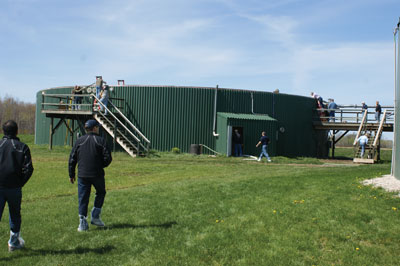 |
|
| On the day of the AgSTAR tour, one of Green Valley’s digesters was out of commission, its dual membrane cover deflated for repairs to its three propeller mixers. |
|
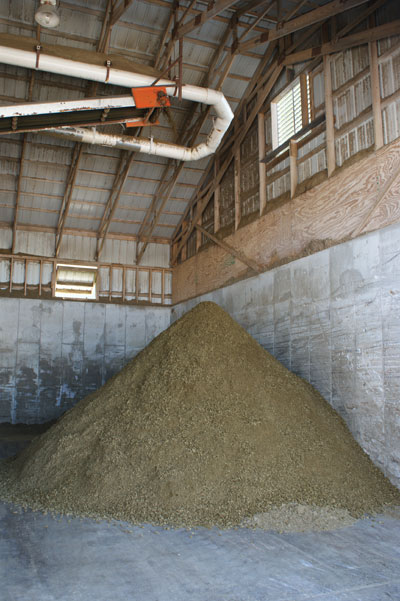 |
|
| Green Valley Dairy uses solids separated from the anaerobic digestate as bedding for its cows. Of the 120 tons of bedding produced each week, about half is used on farm while the other half is sold to neighboring dairies. |
|
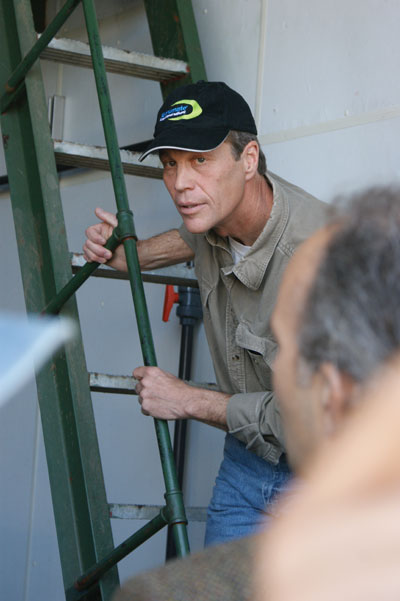 |
|
| Green Valley Dairy part owner Guy Selsmeyer leans in to hear a question during the AgSTAR digester tour. |
|
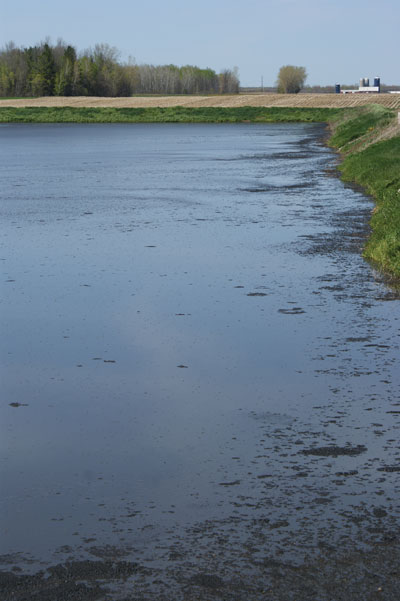 |
|
| Liquid separated from the digestate stream is pumped into nearby lagoons where it is stored for land application. |
|
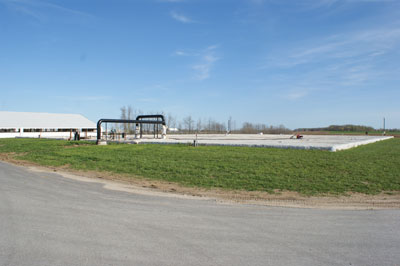 |
|
| Pagel’s Ponderosa Dairy’s two-stage mixed plug-flow digesters, designed and installed by GHD Inc., are located below grade. |
|
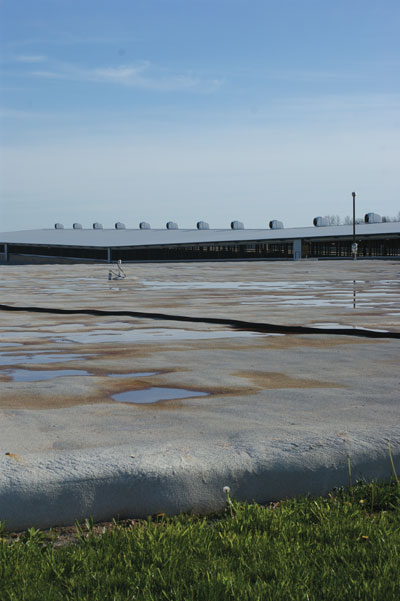 |
|
| About 160,000 gallons of manure is fed daily through the Pagel’s U-shaped digesters, which are mixed by bubbling methane collected on top of the digester through the manure. |
AgSTAR, which is jointly funded by the U.S. Environmental Protection Agency (EPA), the U.S. Department of Agriculture (USDA), and the U.S. Department of Energy (DOE), encourages the use of biogas technologies, such as anaerobic digesters, at confined animal feeding operations (CAFOs) to help reduce methane emissions and provide other environmental benefits.
This year marketed the organization’s fifth conference, which started with a half-day tour of two Green Bay area dairy operations, both using two different styles of anaerobic digesters.
Green Valley Dairy
Green Valley Dairy is a 3,400 head (3,000 milking) dairy farm located near Krakow, Wis. Operated by a management partnership, the dairy operates three above ground, complete mix digesters, two supplied by Biogas Direct and the third designed by Northern Biogas LLC, a company created by the farm owners. Only two of the digesters were operating the day of the tour. One of the farm’s digesters was out of commission, its dual membrane cover deflated for repairs to its three propeller mixers.
The digesters are supplied with about 120,000 to 150,000 gallons of manure daily plus milk parlor wash water, resulting in about 8.5 percent solid matter. The mesophilic system has a retention time of about 22 to 23 days, operates at 104 Fahrenheit and is fed continuously. Before entering the digesters, the manure scraped from the multiple free-stall barns is pre-heated using a Columbia boiler.
“The first year we put our digester in … we found out it wouldn’t operate on the coldest days here in Wisconsin,” explained Guy Selsmeyer, one of the owners of Green Valley Dairy. “We were running out of heat. We kind of redid the heat balance that the original designers of the digester did and we found out the bulk of the BTUs are required to heat the manure.”
He added that it was a learning experience for all involved in the project and he recommended that anyone considering installing an anaerobic digester complete a heat balance of their own operation.
“It isn’t rocket science,” he said. “It’s pretty easy to go through a heat balance and figure out where all your BTUs are.”
Biogas generated from the digesters is dehumidified through a condensate trap and chiller and is also scrubbed aerobically using an oxygen treatment process before it is used to generate electricity through the operation’s two Caterpillar 600 Kw gen-sets. All electricity generated on the farm is sold to We Energies under a “sell-all” contract.
All heat created by both engines in the generation process is also collected through water jackets. Recovered heat is used to heat the digesters, nearby calf barns plus the farm shop and other buildings. It also is used in the winter to pre-heat the manure before it enters the digesters.
“A digester is like a stomach,” explained Selsmeyer. “You want to keep things pretty steady. Keep the bugs happy. Keep the temperature real steady.
“After the first year, we put in a boiler line and the boiler line allowed us to do something I think every digester should have. If you have an engine down or you have to do an oil change, you start to lose temperature right away. The boiler allows you to keep those bugs happy, keep the temperature consistent. You really don’t miss a beat on the gas production and you’re able to have the gas available so that you can start the unit and run it at full right away.”
After the manure is processed in the digesters, it is pumped to three FAN screw press separators that are used to remove all solids, which are then recycled as bedding. Of the 120 tons of bedding produced each week, about half is used on farm while the other half is sold as bedding to neighboring dairies, earning Green Valley about $20 per ton.
Liquid separated from the digestate stream is pumped into a nearby lagoon. Once any remaining solids settle out, the liquid is then pumped to a second lagoon where it is stored for land application.
Pagel’s Ponderosa Dairy
John Pagel grew up on his family’s Kewaunee, Wis., dairy operation, eventually taking over the operation in 1978. He has lived in the family home his entire life.
“Not many people can say that,” he admits.
It was his long relationship with the land and his concern for friendly neighbor relations (“I still want all my neighbors to wave at me with all their fingers.”) that eventually led Pagel to install two anaerobic digesters on his 4600-head dairy.
The two-stage mixed plug-flow digesters were designed and installed by GHD Inc. and became operational in December 2008. They are located below grade and are U-shaped, feeding about 160,000 gallons of manure daily through the continuous system. To help mix the eight to nine percent solids manure, methane collected on top of the digester is pumped to the bottom of the tank and bubbled back up. The system has a retention time of about 20 days and operates at about 100 Fahrenheit.
Like Green Valley’s operation, biogas generated from the Pagel digesters is treated with a condensate trap and a chiller before it is put through a hydrogen sulfate reduction system developed by GHD. The scrubbed biogas is then used to power an 800 Kw Caterpillar gen-set.
“We sell 100 percent of the power we make and we buy 100 percent of what we use,” said Pagel. “At 800 Kw, we’re making about 25 percent more than we’re actually using on the farm.
“We’re planning on buying a second engine and we’re hoping that it will provide another 500 to 600 Kw, if we have enough methane gas.”
Heat from the generators is recovered and used to heat the digester and some farm buildings. The farm also has a backup biogas boiler to help with digester heating.
Once the energy is removed from the manure, the digestate is pumped to a building adjacent to the digesters where the solids are separated using one Doda and two Bauer screw press separators. The farm produces about 15 tons of bedding a day.
“We really like the digester,” said Pagel. “We like the bedding it provides. It provides us with 40 percent more bedding than we can actually use on the farm.”
Extra bedding produced is sold to other farms in the area and neighbors also come by for trailer and pick-up loads for their gardens.
The liquid removed from the digestate is used to help fertilize the operation’s 7,500 crop acres.
While the anaerobic digester represented a big investment for the farm, the Pagels felt that it made sense from an environmental standpoint and for odor control.
“At the time we put it in, it was a $3.2 million investment and we got about 10 percent (funding) with government grants for new technology,” explained Pagel. “Depending on how we do with purchase power agreements, it looks like it is a seven- to 10-year payback.”
The Pagels have opened their farm to the public, inviting tourists and school tours to view the digester and the farm cows being milked on the rotary (carousel) milking parlor.
“I believe that it’s our responsibility to educate the people that are non-farm people about what’s going on at the farm,” said Pagel. “I don’t think we’ve done a good enough job of it in the past. We also believe that even though this is a large farm, it’s also a family farm. We have four children and all four are involved on the farm along with two of their spouses.”